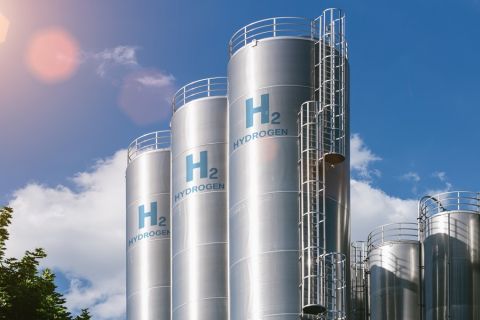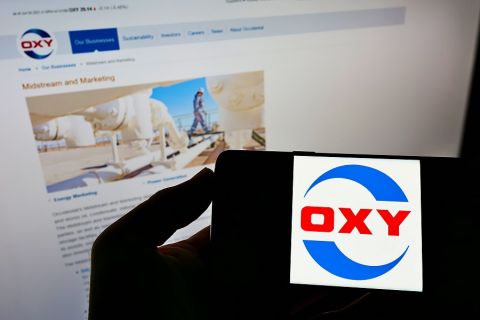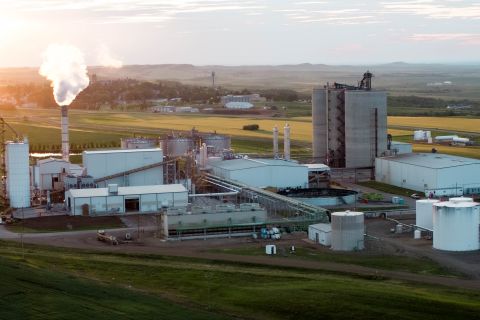
Learn more about Hart Energy Conferences
Get our latest conference schedules, updates and insights straight to your inbox.
The U.S. shale revolution has fundamentally altered domestic hydrocarbon flows, necessitating a “replumbing” of America as new sources of supply are connected to long-haul transportation and key end markets. The large-scale infrastructure buildout associated with the explosion in unconventional resource development is such a game changer that historic paradigms for midstream funding no longer apply.
IHS estimates that direct capital investment in U.S. oil and gas infrastructure rose from $56.3 billion in 2010 to nearly $90 billion in 2013, with an incremental $80 billion to $90 billion of direct capital expected to be invested in midstream and downstream infrastructure through 2020. Beyond that meaningful near-term rate of change, IHS expects nearly $900 billion of cumulative investment in oil and gas infrastructure through 2025, with natural gas and crude oil gathering, transportation and storage systems garnering nearly 60% of that total. Relative to past periods, those numbers are simply staggering.
So how will this unprecedented buildout be funded? Most observers point to exponential growth in the MLP sector, both in the amount of new capital being raised by established MLPs and in the number of new MLPs entering the public markets each year. And that growth is material: In 2013, MLPs raised almost $75 billion in public equity and long-term debt, and there are 112 listed MLPs today vs. 21 in 2000. However, due to the delay between the outflow of capital and the onset of cash flows in midstream development, the full payout model of the MLPs poses inherent constraints in the context of greenfield gathering. Consequently, private capital is becoming an increasingly important source of midstream funding, with private-equity firms, infrastructure funds and separately capitalized “incubators” for MLPs attracting large commitments.
The nature of the shift
In highlighting the recency and magnitude of the oil and gas infrastructure boom, it is worth remembering that U.S. energy independence only became a credible concept over the past few years. For the 30 years preceding, import-dependent viewpoints drove infrastructure project development decisions. Examples include the Capline crude oil pipeline and Louisiana Offshore Oil Port. Once completed, these complementary assets were positioned to transport up to 1.2 million barrels per day (bbl/d) of crude to the Midwest. The addition of Seaway, and the expansion of what is now Enbridge Mainline, likewise reflected the presumption that the U.S. would remain a net importer of crude oil for the foreseeable future.
That presumption was not limited to oil. Fears of declining domestic natural gas production and the resultant expectation of future import needs led to massive investment into LNG import facilities on the Gulf Coast. This preceded breakthroughs in drilling technology and the discovery of massive new U.S. reserves that led a rapid shift to an export strategy.
Performance and commodity price movements have bifurcated the prolific upstream plays between those with favorable single-well economics--such as the Eagle Ford, Permian, Marcellus/Utica and Bakken--and those that are near-term challenged--such as the Barnett and Haynesville. As a result, midstream developers have needed to ramp up capital spending and change their focus yet again. In other words, because the initial wave of infrastructure buildout from 2008-2010 centered on dry natural gas transportation and traditional gas flow patterns, the shift in focus toward liquids-rich plays necessitated an immediate and radical new buildout on the heels of a period of unprecedented infrastructure expansion.
For context, between 2008 and 2010, more than 2,400 miles of interstate pipelines were placed into service to deliver dry gas from U.S. shale plays to the southeastern U.S. alone, according to the National Petroleum Council. Then, with the shift to liquids-targeted drilling, $8 billion was spent annually in 2010 and 2011 on wet gas processing and crude oil logistics. Based on IHS data, spending on NGL and crude oil infrastructure in 2012 increased 260% vs. 2011, and in 2013 increased an incremental 32% vs. 2012. In total, the oil and gas infrastructure buildout between 2008 and 2013 was larger than what we experienced in the entire decade of the 1980s.
The next wave
The industry’s ongoing focus on liquids-targeted drilling likely means that crude oil and NGL production will continue to drive a significant portion of infrastructure growth. Wall Street analysts estimate that up to $30 billion of new crude pipelines will be constructed in the Lower 48 over the intermediate term, and meaningful near-term infrastructure expansions in existing high-focus areas such as the Permian (and ultimately in more remote shale plays such as the Monterey) seem likely.
Given the confluence of factors driving unprecedented midstream spending, private capital is taking on an increasingly important role in the sector. The thesis for midstream infrastructure investment remains strong for the following reasons:
• This is must-run infrastructure, which avoids the vagaries of discretionary spending in what has been a volatile economy;
• For those who view rising interest rates and higher inflation as inevitable, infrastructure investing offers direct exposure to the commodities of both steel in the ground and hydrocarbons in pipe; and
• From a Sharpe ratio (or risk-adjusted return) perspective, midstream still appears to be a good relative bet notwithstanding the rapid recovery in the broader capital markets.
Private capital offers a powerful complement to MLP financing because of the potential for structural flexibility and the firepower associated with larger and larger fund sizes. Whereas the full payout model of MLPs requires them to view new projects in the context of growing distributable cash flow and resultant quarterly distributions to unitholders, private capital can quickly capitalize on promising opportunities that entail a longer time frame to achieve a cash-on-cash return. Moreover, where the nature of the project is low risk due to contracted, fee-based future cash flows from creditworthy counterparties, infrastructure funds and other capital sources can target lower returns than would typically be associated with private-equity.
Concurrent with private capital providers’ increased focus on midstream-, integrated- and upstream-focused companies--under increasing pressure to exploit the potential of the more attractive operating areas while carefully managing their overall capital budgets--are increasingly taking a holistic view of the entirety of their asset portfolios. In many cases, portfolio reviews have resulted in the sale of noncore infrastructure to fund competing projects, allowing private capital to acquire midstream assets that can be restructured and optimized away from the pressure of a 13-week reporting cycle.
Gathering and processing (G&P) assets have drawn much of dealmakers’ attention lately, making up 45% of total midstream deal activity (by size of transaction) in 2013. Given that hydrocarbon volumes serve as the primary driver of the risk profile of G&P assets, there can be a high degree of risk variability among deals, depending on factors such as the decline rates associated with underlying reserves, contract type (percent-of-proceeds, keep-whole, fee-based, etc.) and the slate of hydrocarbons gathered. The current commodity price environment has both operators and investors focused on midstream infrastructure positioned in the liquids-rich plays as processing rich gas into derivative products and transporting NGL have become increasingly important components of the midstream value chain. Associated processing and fractionation assets have also offered an attractive return profile through the most recent commodity price cycle, depending on contract type. G&P as an asset class appears to represent the “sweet spot” of the risk/return spectrum for infrastructure investors in today’s commodity price environment.
Investment forms
In recent years, private investments in midstream have taken three principal forms: payment-in-kind (PIK) preferred; straight preferred; and control equity for greenfield development with a management promote.
The PIK preferred structure allows MLPs to address potential distributable cash flow dilution while providing private investors with access to attractive capital projects. For example, TPG Capital used a PIK preferred structure to fund a $300 million investment in Copano Energy in 2010. The structure allowed Copano to bridge the timing gap between the initial capital outlays required to fund its Eagle Ford expansion strategy and the onset of free cash flows.
TPG received quarterly distributions in the form of incremental preferred equity that accreted at the coupon rate for the first three years, which became convertible into common units on a one-for-one basis in July 2013. TPG thus benefited from compounding during the pre-conversion period. The investment was well received by both the market and the analyst community, with Copano’s unit price experiencing a 22.5% value appreciation from announcement to year-end 2010: a 12.5% outperformance of the Alerian Index over that period.
In a straight preferred equity investment, the security pays a cash coupon with no PIK feature. In October 2010, Blueknight Energy Partners LP issued $140 million of cash pay preferred to Charlesbank Capital Partners and Vitol, which had acquired Blueknight’s general partner one year earlier. This investment provided the MLP with much-needed incremental equity using a “smarter piece of paper” than common equity that provided the sponsors with predictable structured payments until conversion. Straight preferred equity is typically convertible upon election beginning three years post-investment at a predetermined conversion rate that supplements the return to the capital provider.
Control equity with a management promote structure is the most common structure for privately funding greenfield midstream. Because of the risks associated with early-stage infrastructure buildouts, these projects can provide returns more typical to private-equity investments. Under scenarios where the private capital provider achieves predetermined multiples of invested capital or achieves targeted internal rate of return hurdles, the investor is obligated to share a meaningful portion of its returns with the management team responsible for developing the project.
For example, Arrow Midstream was formed by a New York-based investment fund and an Oklahoma-based management team to develop, own and operate crude oil, natural gas and water infrastructure on the Fort Berthold Reservation in the core of the Bakken. At the time of Arrow’s formation, its operating area was almost entirely devoid of infrastructure (including roads) and drilling was in the earliest stages of development, greatly increasing the risk profile of its three-phase pipeline system. By 2013, Arrow consisted of more than 460 miles of pipelines, gathered over 50,000 bbl/d and was sold to Crestwood Midstream Partners LP for $750 million.
The three investment structures summarized above are not mutually exclusive. For example, Caiman Midstream was formed by EnCap Flatrock Midstream (EFM) and an experienced management team in 2009 with control equity issued to EFM and a promote structure for management. Two years later, with Caiman experiencing rapid growth in the Marcellus, EFM and management effected a new financing with Highstar Capital in the form of a $300 million preferred. This capital allowed Caiman to further its development of large-scale gathering and processing infrastructure in the Northeast. By tapping a new capital source with lower return hurdles than traditional private-equity after the riskiest stage of development, EFM and management created a win-win for Caiman’s founders and Highstar Capital, with the business ultimately being sold to Williams Partners LP in March 2012 for $2.5 billion.
ConclusionThe total capital required to meet the backlog of midstream infrastructure needed to replumb America is enormous, but the opportunity set for midstream investors is broad and attractive enough to support massive capital-raising by infrastructure-oriented investment firms. Research firm PLS estimates that well over $10 billion of newly raised private capital flowed into the oil and gas sector in 2013, and we expect that the rate of private investment will increase dramatically in the years ahead. MLPs alone cannot come close to funding the overall infrastructure backlog, given the importance of achieving near-term cash flows whenever significant amounts of capital are deployed. Last year was a record year for MLPs in terms of total capital raised, with midstream MLPs attracting almost $75 billion in total investment. Even if this pace were to continue unabated through all cycles in the capital markets, and even if 100% of this capital was used to fund gathering and processing infrastructure, it would still fall short of our future estimated annual funding requirement of $80billion to $90 billion. Consequently, the importance of private capital to midstream development will not merely continue--it will increase.
Peter Bowden is global head of midstream energy investment banking and a managing director of Jefferies LLC. Prior to joining Jefferies in July of 2012, he was a managing director and head of midstream/MLPs at Morgan Stanley. Since joining Jefferies, Bowden advised Copano Energy in its $5 billion sale to Kinder Morgan, Inergy in its $7.3 billion merger with Crestwood, Chesapeake in its $5 billion exit from midstream and Arrow Midstream Holdings in its $750 million sale to Crestwood.
Recommended Reading
SLB’s ‘Transition Technologies’ Bring In $1B+, Baker Hughes Sees 45% New Energy Orders Jump
2024-01-24 - The oil and gas sector’s deep understanding of complex subsurface rock is helping to advance carbon capture and storage and other technologies.
Tangled Up in Blue: Few Developers Take FID on Hydrogen Projects
2024-04-03 - SLB, Linde and Energy Impact Partners discuss hydrogen’s future and the role natural gas will play in producing it.
Occidental Reports ‘Great Progress’ on Net-zero Pathway, DAC
2024-02-21 - Most of Occidental Petroleum’s planned $600 million investment in emerging low-carbon ventures for 2024 will go to direct air capture facility STRATOS, CEO Vicki Hollub says.
SLB to Acquire Majority Stake in Aker Carbon Capture
2024-03-31 - SLB and Aker Carbon Capture plan to combine their technology portfolios, expertise and operations platforms to bring carbon capture technologies to market faster and more economically, SLB said in a news release.
Red Trail Energy Issues Carbon Removal Credits
2024-03-06 - Red Trail Energy’s CO2 removal credits is the largest durable carbon removal project registered on the Puro Registry to date.







